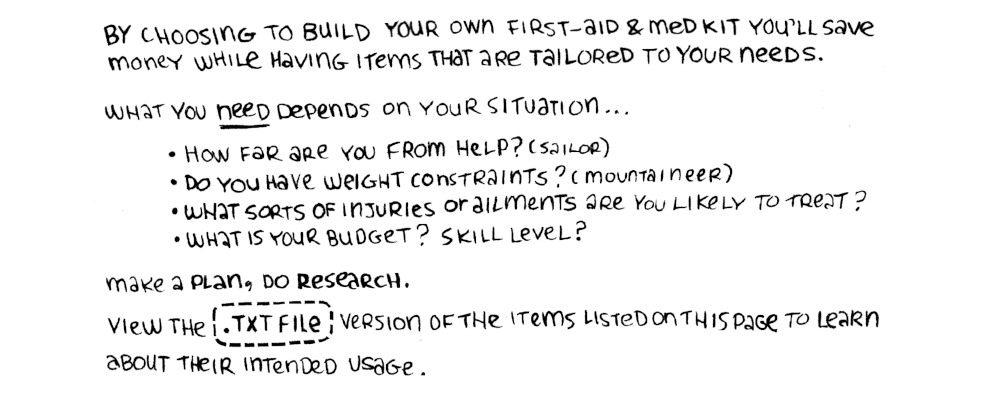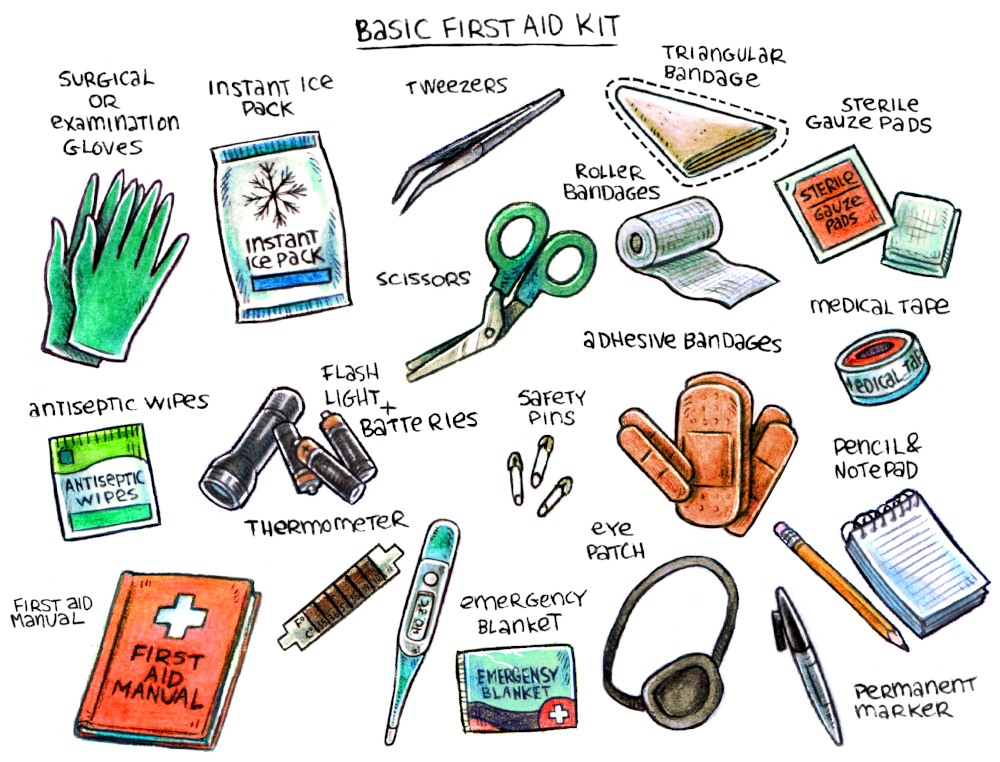
Learn everything you can about first-aid. Knowing what to do in the event of severe bleeding, choking, or severe allergic reaction could save a life.
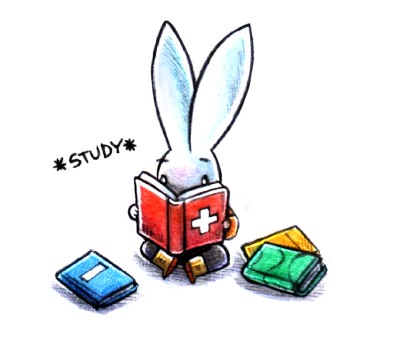

It may not be possible for EMS personnel to come to assist you in an emergency. You may need to contact a doctor and request advice on providing care, even if it is outside of your training. Document the doctor’s orders carefully.
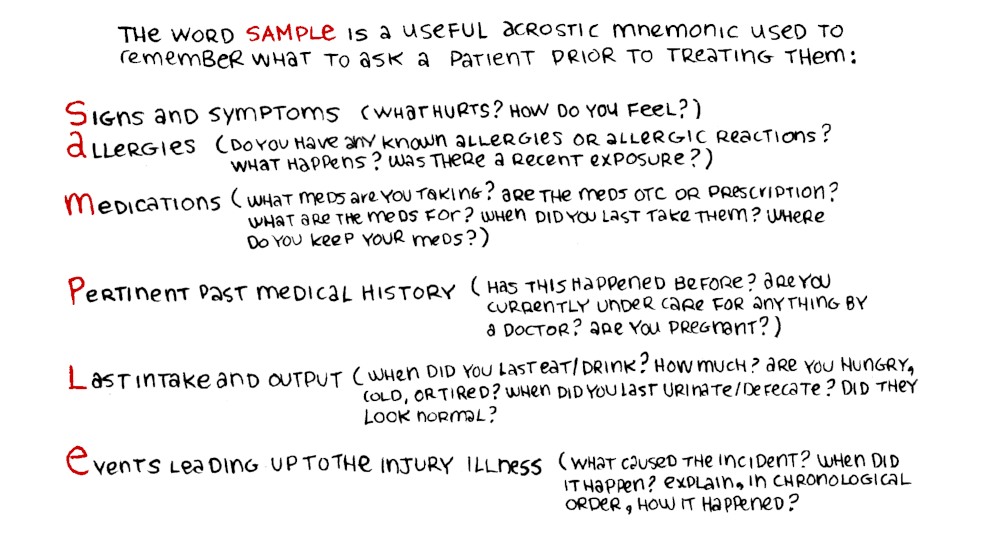
The word SAMPLE is a useful acrostic mnemonic to remember what to ask a patient prior to treating them:
Signs and symptoms (What hurts? How do you feel?)
Allergies (Do you have known allergies or allergic reactions? What happens? Was there a recent exposure?)
Medications (What medications are you taking? Are the medications over the counter, or prescription? What are the medications for? When did you last take them? Where do you keep your medications?)
Pertinent past medical history (Has this happened before? Are you currently under care for anything by a doctor? If a woman, are you pregnant?)
Last intake and output (When did you last eat/drink? Are you hungry, cold, or tired? When did you last urinate/defecate? Were they normal?)
Events leading up to the injury/illness (What caused the incident? When did it happen? Explain, in chronological order, how it happened)
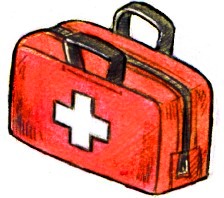

Clearly mark the first-aid kit with a red cross<, and make sure those sharing the space with you know where it is. Keep a list inside of the items you use, and be sure to top off the kit every year or so.
By choosing to build your own first-aid and med kit you'll save money, while having that are tailored to your needs.
What you need deends on your situation:
How far are you from help? (Sailor)
Do you have weight constraints? (Mountaineer)
What sorts of injuries or ailments are you likely to treat?
What is your budget? Skill level?
Make a plan, do research.
View the .txt file version of the items listed on this page, and of their intended usage.
Basic First-Aid Kit
Sterile gauze pads (dressings) in small and large squares to place over wounds, Medical tape, Roller and triangular bandages to hold dressings in place or to make an arm sling, Adhesive bandages in assorted sizes, Scissors, Tweezers, Safety pins, Instant ice packs, Disposable non-latex gloves(such as surgical or examination gloves), Flashlight(with extra batteries in a separate bag), Antiseptic wipes or soap, Pencil (and sharpie) and pad, Emergency blanket, Eye patch, Thermometer, a first aid manual, burn dressings(with gel), hydration tablets/powder, surgical tape, petrolatum gauze, and hot water bottle.
Basic Medicine Kit

Always read about a medicine before using it. If administering medicine to another person, ask about their allergies, and past medical history, last oral intake etc. Some medicines can cause severe allergic reactions, or may interact with other medicine.

Never administer anything to anyone without their consent.
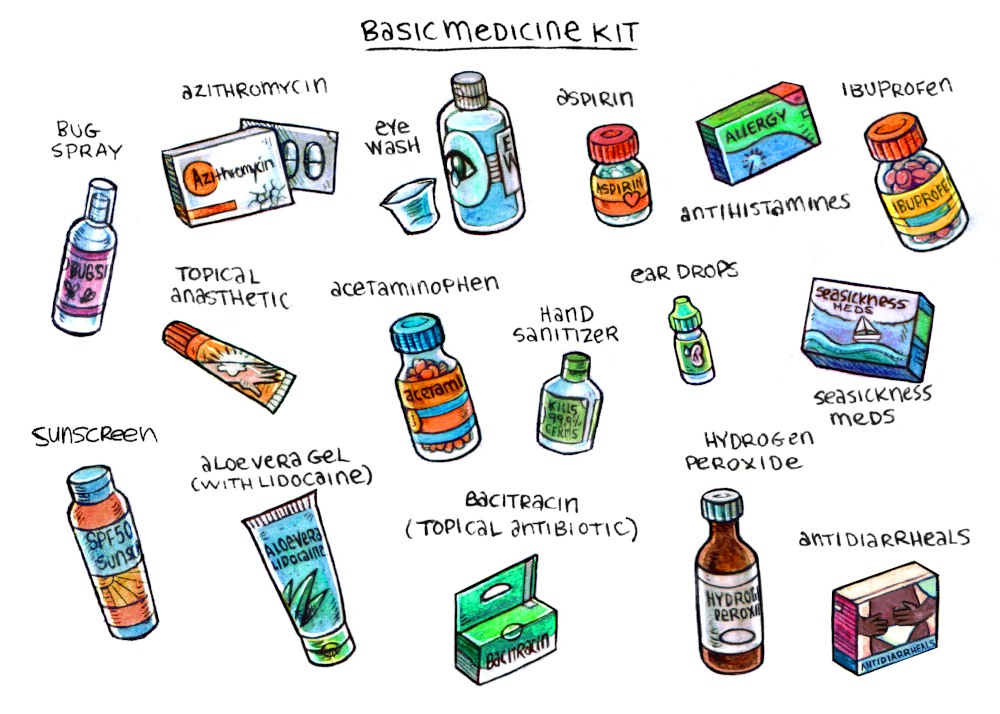
: ibuprofen, aspirin, antihistamines, anti-nausea meds, ear drops, eye wash, bug spray, hand sanitizer, topical anesthetic, antiobiotic(oral), acetaminophen(paracetamol), sunscreen (SPF 30), aloe vera gel with lidocaine, topical antibiotic(powder & ointment), hydrogen peroxide, anti-diarrheals, laxative, codeine, anti-chafing cream, and antifungal cream.
Advanced add-ons to a medical kit
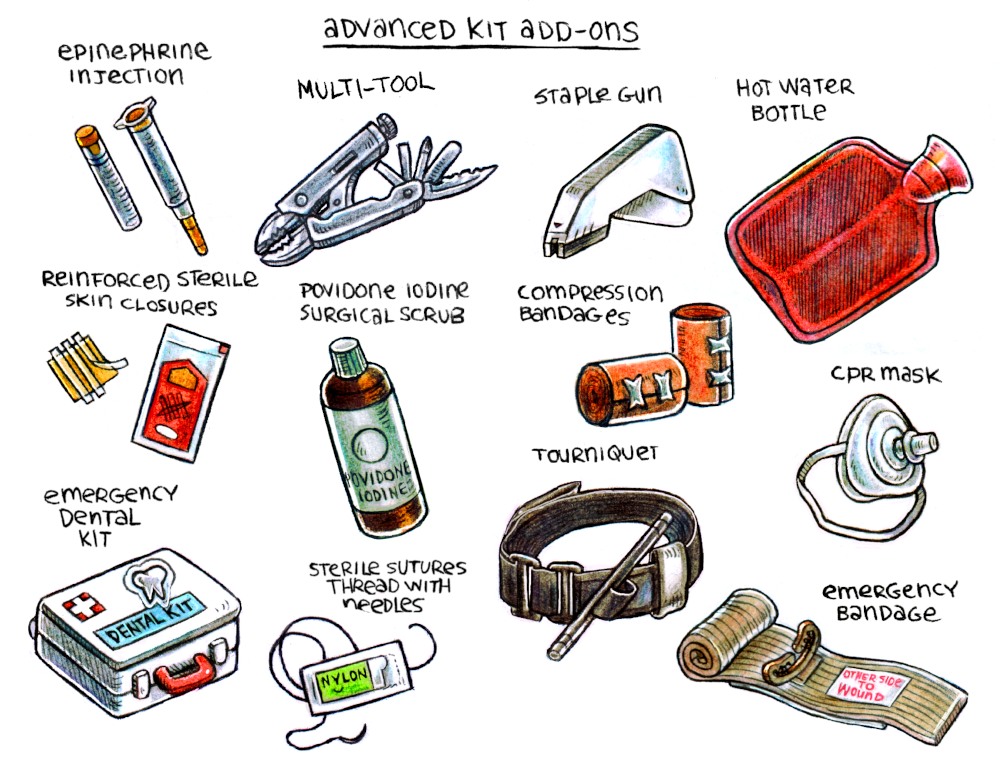
Staple gun, epinephrine, tourniquet, compression bandage, reinforced sterile skin closures, CPR pocket mask, povidone iodine surgical scrubs, sterile sutures thread with needle, an emergency(israeli) bandage, an emergency dental kit, and hemostatic dressings(with coagulant)

